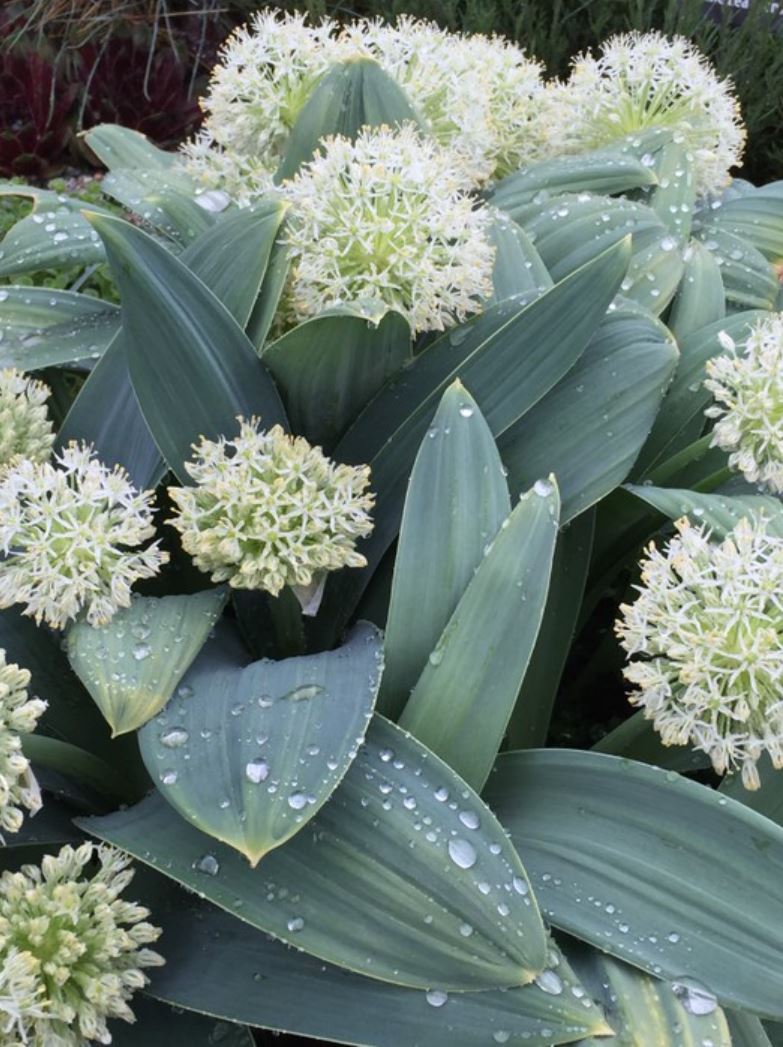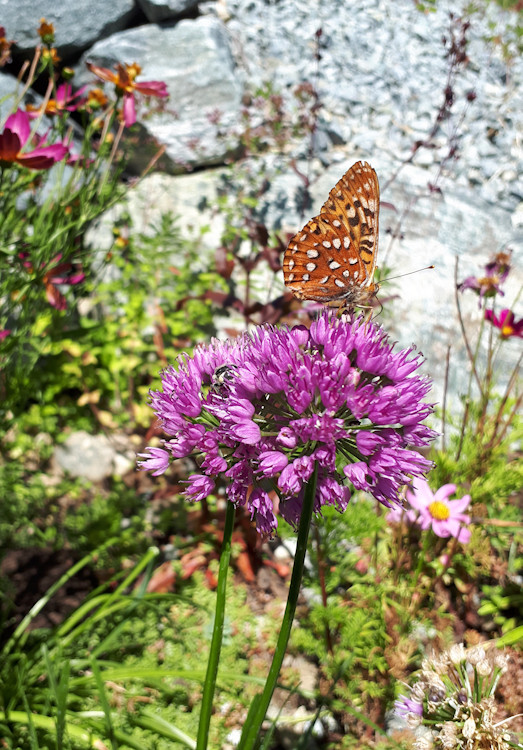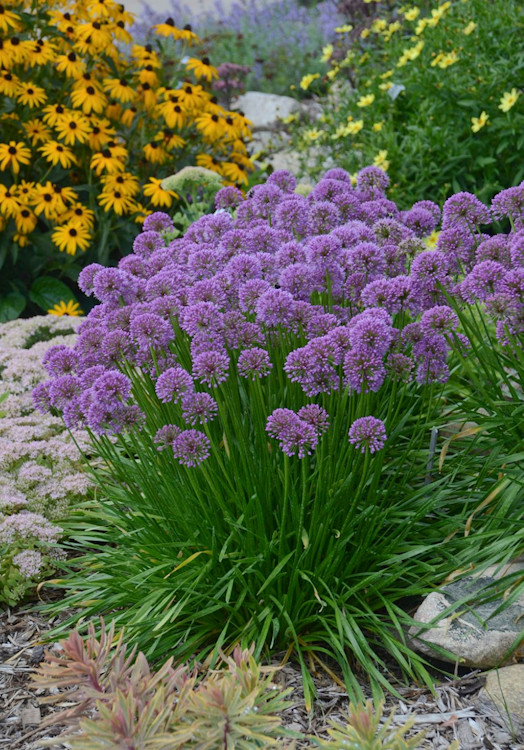Gardening with Nature | January 2021
Article by Sigrie Kendrick
Planning your garden should unquestionably include bulbs. There are many drought-tolerant bulb options available, ranging from common crocuses to specialty Triteliea and everything in-between.
One of the ‘everything in-between’ categories which offer both common and uncommon varietals can be found in the Allium or Onion family. The Allium genus is comprised of more than 700 species grown for both culinary and ornamental purposes.
In the Okanagan Xeriscape Association’s demonstration garden on Gordon Drive in Kelowna, we grow a variety of Alliums and we always have bulbs available for purchase at the annual OXA Spring Plant Sale, the primary fundraiser for this non-profit organization.
Both Allium cernuum and Allium karataviense are great drought-tolerant bulbs to consider adding to your garden.
Allium cernuum, commonly called Nodding Onion is featured in our native garden and it occurs locally in grasslands and dry, open, rocky sites. This species is the most common native onion in the Southern Interior and is easily identified by its pink to rose, occasionally white, drooping or nodding flower heads held on top of leafless stocks, reaching a height of 12-18 inches with a spread half its height.
Like all the Allium family, Nodding Onion emits a strong onion odour when cut or bruised and as such is not favoured by deer. Interior native people had many culinary uses for Allium cernuum and it was also used traditionally as a disinfectant and to alleviate insect bites. This perennial is hardy in zones 4-8, blooming from June to August in full sun to part-sun locations and it attracts a variety of pollinators.

Fig. 1 – Nodding Onion (Allium cernuum), Gwen Steele
Allium karataviense or Turkistan Onion is an ornamental onion native to Central Asia, specifically Kazakhstan, grown for both its soft pink umbrel flowers, reaching approximately 12 inches in height, and for its green-grey foliage. Allium karataviense blooms earlier in the season and is typically in flower in the OXA demonstration garden in May, delighting those in attendance at our annual Spring Plant Sale.
Allium karataviense is an important source of food for pollinators, especially butterflies. This perennial is seldom bothered by pest or disease but can suffer from bulb rot in overly irrigated, poorly drained sites.
Allium bulb types are late spring/early summer bloomers that go summer dormant. You can cut bulb-types to ground level when foliage begins to turn yellow in summer.

Fig. 2 – Turkistan Onion (Allium karataviense), Gwen Steele
A relatively new addition to the Allium scene is the cultivar, Allium ‘Millenium’, and while not currently planted in the demonstration garden, volunteers have been testing this perennial in their private gardens and we look forward to introducing it to the UnH2O demonstration garden in the coming year.
This hybrid ornamental onion is easily grown in average, well-drained soil in full to part-sun locations and produces masses of rose-pink globe-shaped flowers at a height of 15-20 inches, with a similar spread. This Allium is not a bulb and hence blooms later in the season. It can be found in flower in mid to late summer, often covered with hungry pollinators. It should be cut to the ground in the late fall.
Allium ‘Millenium‘ was awarded the ‘Plant of the Year’ by the Perennial Plant Association for 2018.
All the above Alliums make excellent cut and dried flowers where their globe-shaped blooms provide an interesting contrast to more traditional flower forms.
Though many Allium are traditionally planted in the fall, ‘Millenium‘ is available from many bulb companies with a shipping date to our planting zone beginning in the first week of May.

Fig. 3 – Allium Millenium, Sigrie Kendrick

Fig. 4 – Allium Millenium, provenwinners.com
If you want some stunning floral displays in your xeriscape garden, think of the Allium family.


This is a pretty interesting article, anything that is not on the deer most desired menu is appreciated. Keep up the good work.
Thanks.